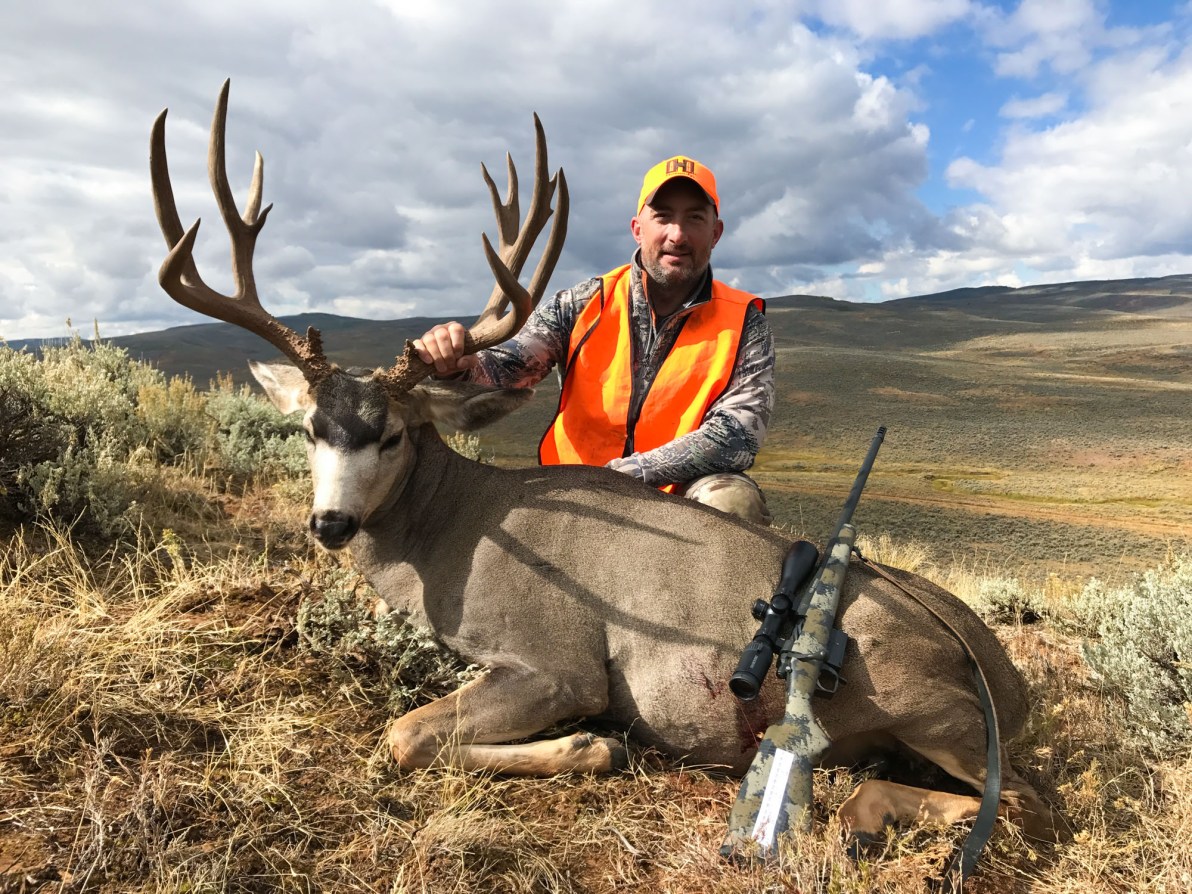We may earn revenue from the products available on this page and participate in affiliate programs. Learn More ›
Mule deer are my favorite big game to hunt—which is a sentiment shared by many Western hunters who, like me, consider them North America’s quintessential open-country game animal.
Mulies live in some of the most beautiful, raw, and dramatic places in North America—broken badlands, rolling sage brush, red-rock desert, alpine redoubts. Longer shots and windy conditions often go with the terrain.
The best mule deer calibers are those that tailor themselves to these environments. While you can shoulder any big boomer and knock over a mule deer, there are advantages to using a balanced cartridge. By that, I mean one that is inherently accurate, that shoots bullets with a high BC to give a flatter trajectory and more resistance to crosswinds, and that doesn’t generate excessive recoil so the shooter can spot impacts and make a quick follow-up shot if needed.
Mule deer are stout animals, but don’t have the same heavy bone structure you’ll find in elk or moose, so there’s more leeway with bullet selection. You can make good arguments for traditional cup-and-core bullets, bonded bullets, monometal copper alloy projectiles, hunting bullets designed for longer ranges, and even match bullets. I’ve used all with good results.
How I Picked the Best Mule Deer Cartridges
I’ve divided this list by caliber, going from 6mm/.243 up to some .30-caliber suggestions. You can certainly go with cartridges larger than the .30s—I’ve killed a couple mule deer with the .338 Federal, for instance—but there’s no real point to hauling around a big .338 unless you’re on a multi-species hunt or happen to be in grizzly country and want the added sense of security that comes with a bigger cartridge.
Now there are a lot of cartridges I didn’t include on the best mule deer caliber list. (I’m using “caliber” interchangeably with “cartridge” because that’s how people search for such things in the age of Google.) To keep this manageable, I’ve highlighted cartridges that I feel are suited especially well for mule deer.
It isn’t to say your favorite, which might not be here, isn’t a damn-fine round. I’m sure it is. That said, here are 14 of the best mule deer cartridges, along with a bunch of honorable mentions.
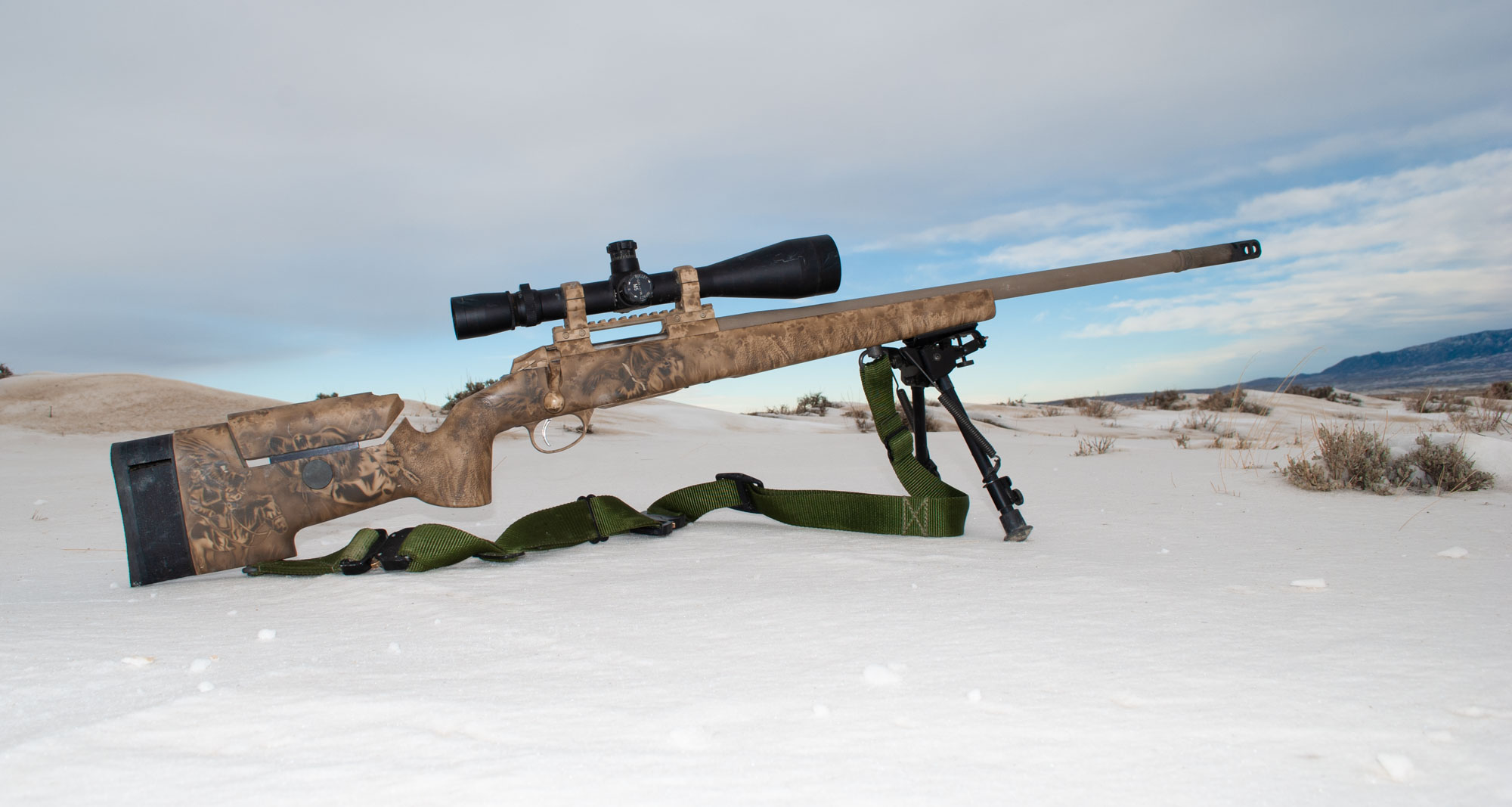
Best Mule Deer Caliber: 6mm/.243 in.
Plenty of mule deer have been taken with bullets smaller than 6mms. I’ve done it myself, most recently with a .224 Valkyrie on a mulie buck in West Texas a couple seasons back. However, I think the 6mm/.243 cartridges are a better starting point.
In terms of accuracy, high BCs, terminal performance, and moderate recoil, the 6mms are wonderful for mule deer. Some hunters might think them a little light—and there are plenty of larger cartridges to go with—but the historic track record of these rounds is hard to argue with.
.243 Winchester
The .243 Win. has been a fixture of Western deer hunting for decades. As a do-it-all round for coyotes, deer, and antelope, no other cartridge has been as successful. And for those who don’t know, they might be shocked to learn how many elk it has accounted for as well.
There are a large number of factory loads that will work on mule deer with bullet weights ranging from 75 to 100 grains.
- Federal 100-grain SP Non-Typical
- Remington 95-grain Core-Lokt Tipped
- Norma 100-grain Whitetail
- Nosler 90-grain Accubond
6mm Creedmoor
I’ve taken more critters with this round in the last decade than any other cartridge. That shouldn’t be a huge surprise, given that when I designed the 6mm Creedmoor with Hornady back in 2010, the goal was to create an accurate 1000-yard round that would be good for deer, antelope, and predators.
The advantages of the 6 Creed over the .243 Win. are that it is built along the principles of modern cartridge design. (Meaning faster twist rates, moderate muzzle velocities, optimized for high BC bullets, minimal case taper, and sharper shoulders.) This makes it more inherently accurate, and able to run the long, sleek, heavy, and high-BC 6mm bullets with less fuss in standard sized magazine actions.
The most effective factory loads are those that leverage heavy-for-caliber bullets like the Hornady 103-grain ELD-X, Berger 105-grain Target Hybrid, Sierra 107-grain Matchking, and the like.
The 6mm Creedmoor is also a handloader’s delight running powders such as H4831SC, H4350, RL-16 and RL-23.
6mm/.243 Honorable Mentions
The .240 Weatherby and 6mm Remington don’t have the same degree of popularity as the .243 Win. or 6mm Creedmoor, but they still have a devoted fan base. Both are capable and flat-shooting. Because of the limited factory offerings, handloaders will do better with these rounds.
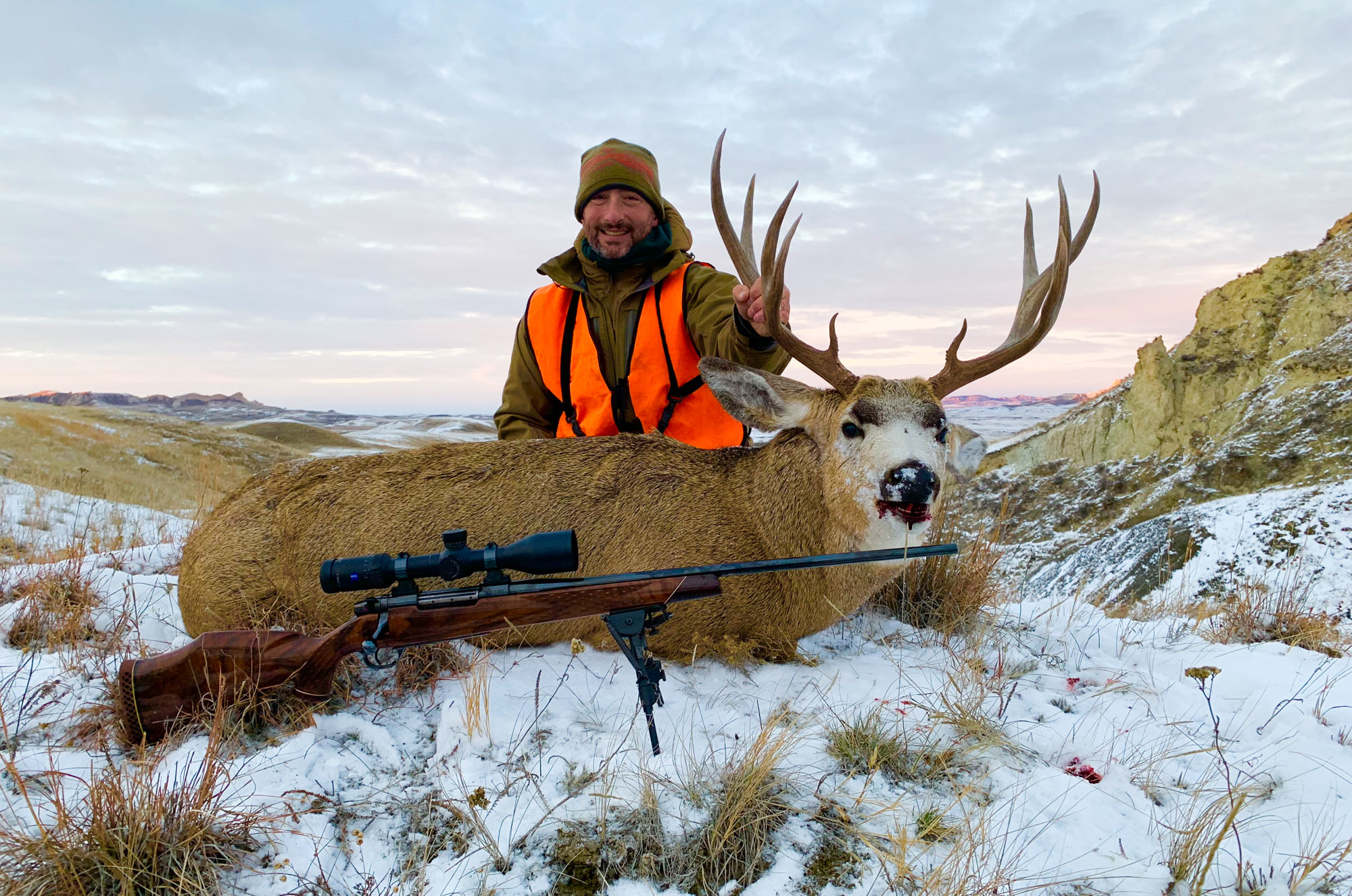
Best Mule Deer Caliber: Quarter Bores (.257 in.)
Fans of the quarter bores have a chip on their shoulders. They don’t feel their .257s get the credit they are due, especially when the conversation turns to our best hunting cartridges. And they have a point.
The heavy focus on 6mm (.243) and 6.5mm (.264) rounds in recent years—fueled by the convergence of long-range shooting, precision rifle competition, and hunting—has left the .257s with a serious case of middle-child syndrome.
But once upon a time it was widely regarded as the best mule deer caliber, as well as an outstanding choice for antelope and predators. Anyone ignoring the quarter-bores when selecting a rifle for deer—mulies or otherwise—is doing themselves a disservice.
.257 Weatherby Magnum
The .257 Weatherby was one of my first cartridge crushes, and one I still turn to. I’m not alone in that. Back when the only source for ballistic data were the drop charts printed in the back of gun catalogs, the .257 Wby. stood out for how remarkably fast and flat it shot. Those were the only yardsticks by which we knew to judge a cartridge, so for many of us the .257 Weatherby had to be one of the “best.”
The cartridge was Roy Weatherby’s favorite as well. It’s a true fire-breather, propelling 117-grain bullets in some loads at 3400 fps, while rocketing 100-grainers at 3600 fps. If you want these speeds from your rifle, a 26-inch barrel is the way to go, but even out of 24-inchers the .257 Wby. is potent medicine.
.25/06 Remington
Hunters who use the .25/06—and my little brother is one of them—are fiercely devoted to their cartridge of choice. As the name implies, its parent case is the .30/06, though technically it is a .270 Win. (itself based on the ought-six) that’s been necked down for .257-caliber bullets.
The commercial version of it appeared in 1969, and it has enjoyed a good run that continues to this day. Bullet weights of 90 to 120 grains are most common, and plenty of them work great for deer. Heavier bullets have muzzle velocities around 2990 fps, while the lighter 90-grainers step out at 3400 fps+.
- Federal 100-grain Nosler BT
- Hornady 110-grain ELD-X
- Hornady 117-grain Interlock Spire Point American Whitetail
.257 Honorable Mentions
Three other quarter-bores deserve a nod—two vintage rounds and one new wildcat. The old-timers are the .257 Roberts and .250 Savage. Though they are in their twilight years, both are capable mule deer rounds as long as they are employed at the moderate distances they are designed for. Loaded with 100-grain softpoints, the .250 Savage is good to 300 yards. The .257 Bob, does well with 110-grain Accubond or 117-grain spire points.
The new guy on the block is the 25 Creedmoor. I don’t know that it will really catch on given how crowded the field of new Creed-like cartridges is, but when paired with the 131-grain Blackjack ACE bullet it delivers impressive performance.
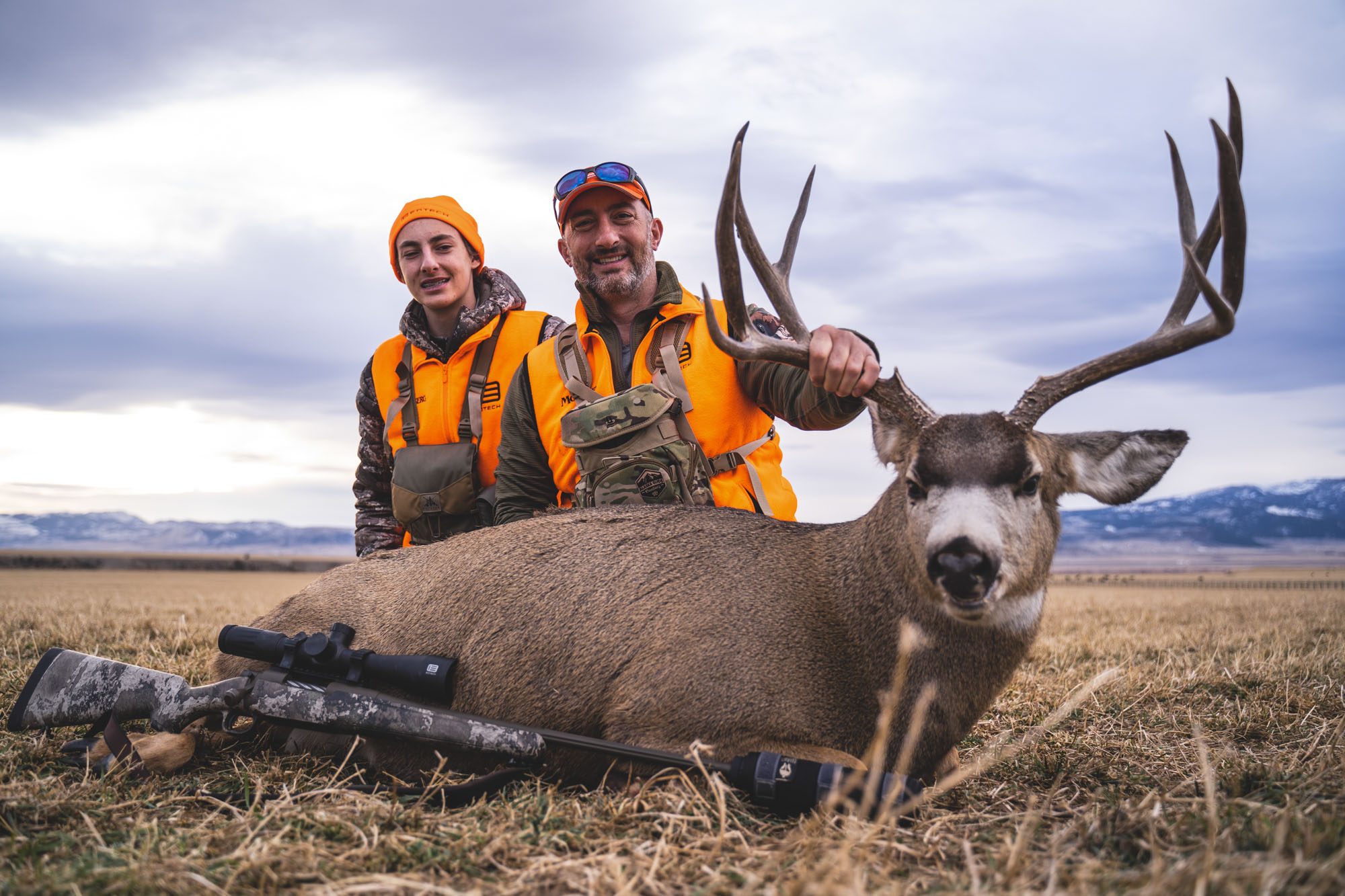
Best Mule Deer Caliber: 6.5mm/.264 in.
Welcome to the most divisive entry on the list of best mule deer calibers. The 6.5 haters should probably skip ahead because I don’t have anything bad to say about these cartridges—though to make it more palatable I’ll kick it off with the Swede.
I mentioned in the intro that good mule deer cartridges are well balanced, and it’s hard to argue that any caliber is better balanced than the 6.5. The number of heavy-for-caliber, high BC, hunting, match and hybrid bullets in .264 seems to grow by the month. We have an embarrassing number of fine 6.5mm projectiles to choose from.
While legions of new hunters and shooters have jumped on the 6.5 bandwagon, making this the most popular class of cartridges today, plenty of veteran hunters have known about the charms of the .264s for decades.
6.5×55 Swede
Only a handful of cartridges can boast the longevity enjoyed by the 6.5×55 Swede. Introduced in 1894 it has proven itself on the battlefield, in competition, and in hunting camps worldwide.
Inexpensive surplus rifles lured many American hunters to the Swede back in the day, and those who still use it are often bemused or irritated at the praise lavished on the 6.5 Creedmoor and other .264-caliber upstarts.
Factory loaded ammo tends to keep pressures and velocities moderate, but handloaders have juiced the rounds for years to bump up performance. If you go that route, make sure you only do so in a modern action designed for higher pressures—and don’t go overboard.
Given the Swede’s undisputed track record of success on moose, it is more than enough for mule deer. (And this also answers the question whether the Swede and other 6.5s like the Creed are capable on elk: Yes.)
There are a lot of 6.5×55 factory loads available, especially if you consider some of the European ammo makers.
6.5mm PRC
It hasn’t taken long for this recent introduction (2018) to catch on in a major way with hunters. Compared to the 6.5 Creedmoor, it has more gas in the tank thanks to its larger case and pushes bullets about 200 fps faster than its little brother. It’s arguably today’s best open-country hunting cartridge.
Muzzle velocities with 140- to 147-grain bullets fall between 2900 and 3000 fps, which is a sweet spot for big game hunting cartridges and competition rounds. Recoil is manageable, barrel life is good, and when using high BC bullets, the retained velocity is excellent.
The 6.5 PRC also does well with bullets like the 156-grain Berger Elite Hunter, which can also be driven fast (2900 fps and up) thanks to their moderate bearing surface.
Another thing in the 6.5 PRC’s favor is outstanding accuracy. The 6.5 PRC has won its share of ELR (Extreme Long Range) matches where the targets go out to 2,000 yards and beyond—and that’s when pitted against the big .30 and .338 magnums.
6.5-284 Norma
What does the 6.5-284 Norma bring to the party that elevates it above other 6.5 rounds? In a word, style. That might seem like an odd metric to employ when looking at the best mule deer calibers, but I think it holds up.
Mule deer are extraordinary animals—mature bucks in particular—so hunting them with something a bit special and out of the ordinary, something with elan, is fitting.
The 6.5-284 Norma has a fascinating history. It is based on the .284 Winchester and was a wildcat that was first designed for hunting and then became a notable 1,000-yard competition round. Usually, that works the other way.
It was standardized in Europe in 1999 and it wasn’t until 2019 that it was approved by SAMMI in the U.S. But it already had a sizeable following established by the time our domestic shooting industry got around to officially recognizing it.
Driving 130- to 140-grain bullets at 2950 fps, give or take, it shoots flat and will hit hard at extended ranges.
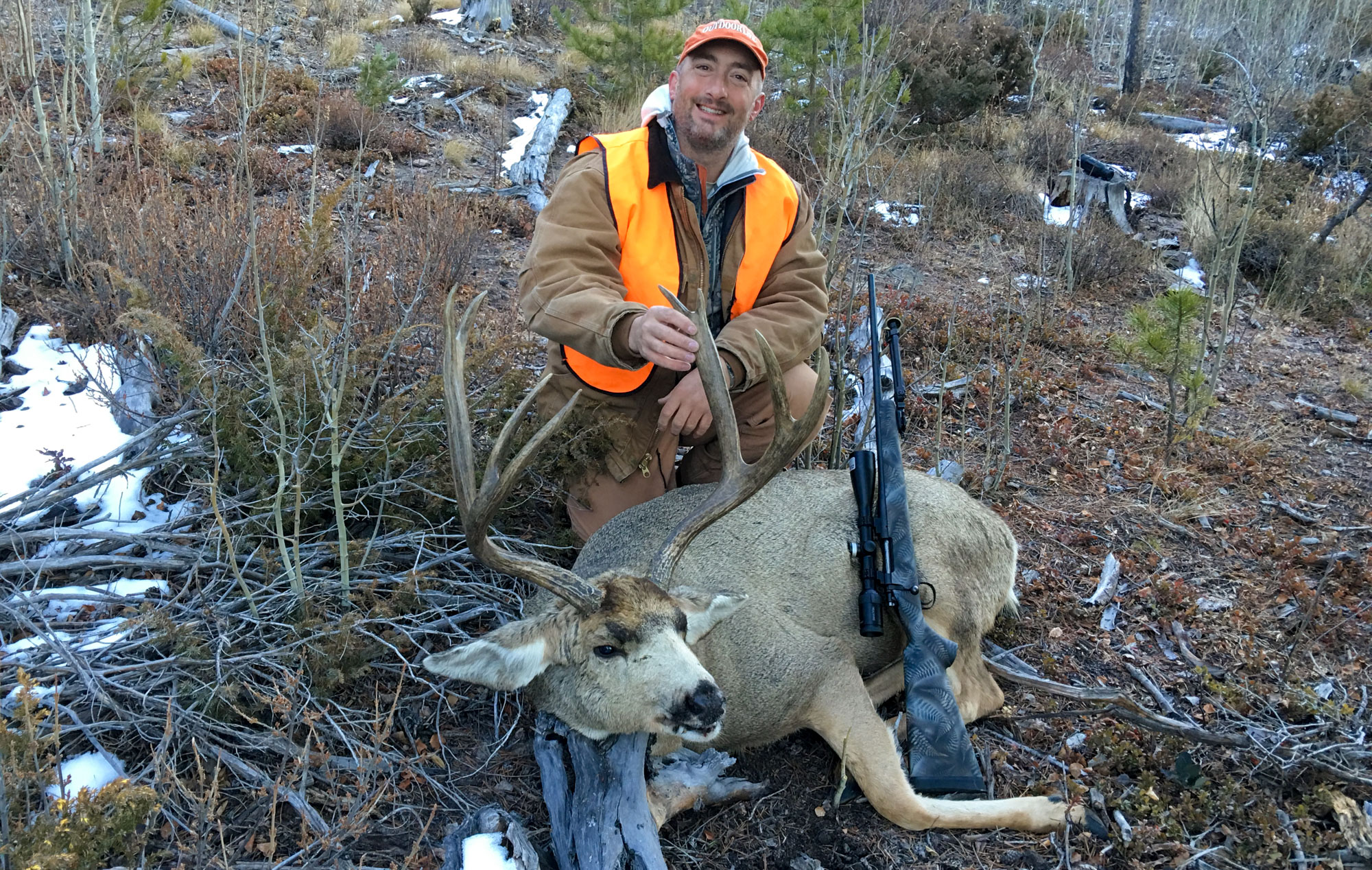
6.5mm Honorable Mentions
The .264 Winchester is a fine round that never really took off. Winchester introduced it in the late 1950s along with the .458 Win. Mag. and .338 Win. Mag., both of which did much better than this belted 6.5mm. All three are based off the .375 H&H. It drives 140-grain bullets right around 3000 fps.
There’s no need to dwell on the 6.5 Creedmoor, but there’s a reason it has become the most popular deer round in American—and it isn’t just from marketing hype. If the launch of the .260 Remington hadn’t been bungled so badly—it was crippled when introduced with sub-par hunting ammo—it might be the toast of the town rather than the Creed. While not as technically sophisticated at the 6.5 Creed, the .260 is still a hell of a choice for mule deer.
If speed is your thing, the 6.5mm Weatherby RPM might be what you’re looking for. This is Weatherby’s first round that doesn’t feature a double-radius shoulder, marking the company’s transition to modern cartridge design. While it drives a 140-grain bullet at 3100 fps, the 26 Nosler takes that even further with an MV of 3300 fps with the 140s.
While there’s nothing wrong with speed, you can have too much of a good thing, and both these cartridges are juiced to the point of diminishing returns. Expect shorter barrel life, extra recoil and muzzle blast, and less consistent accuracy if you go that route.
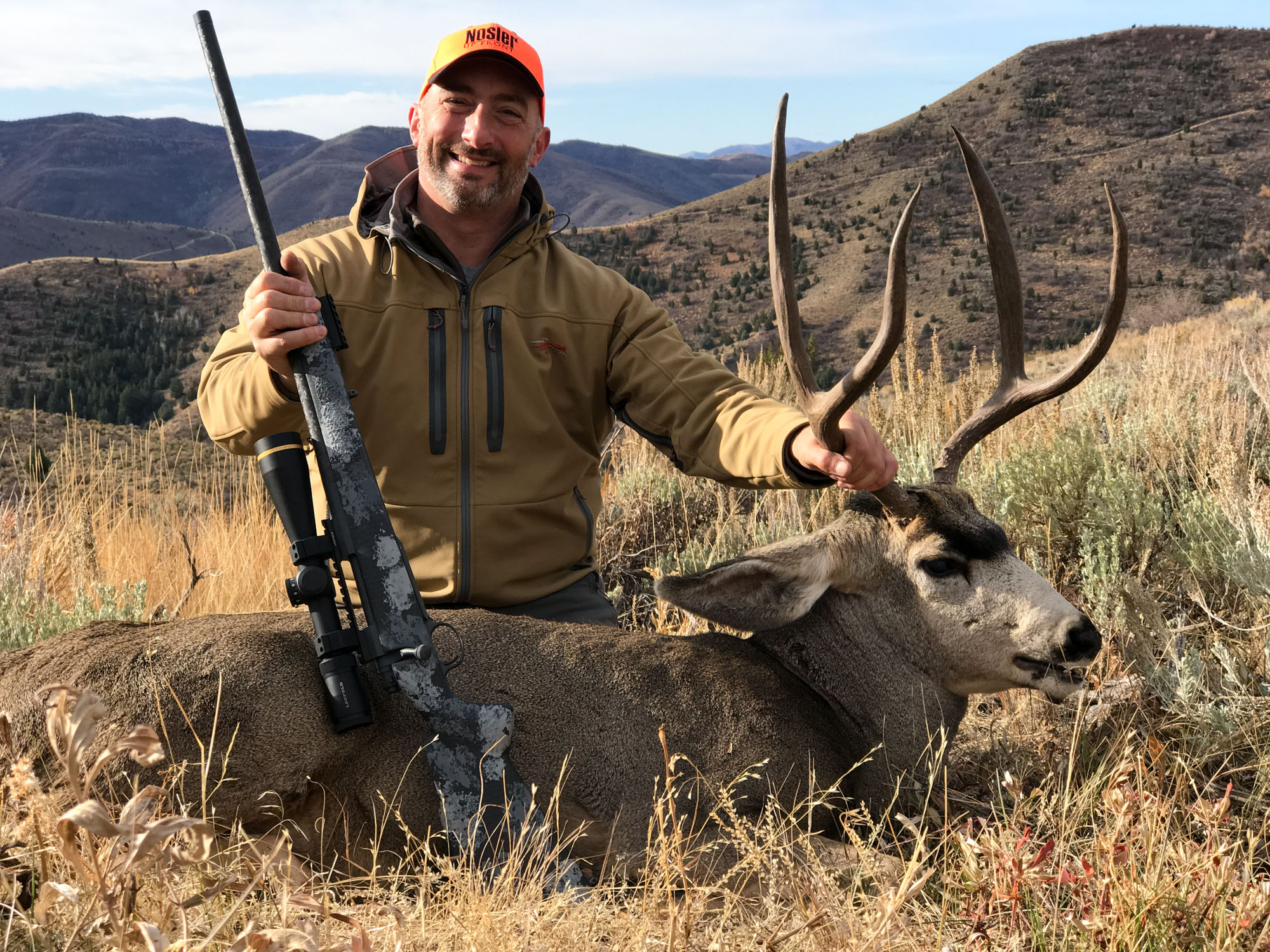
Best Mule Deer Caliber: The 27s (.277 in.)
You knew the .270 Win. would make the list of best mule deer cartridges, but that’s not the only round that shoots bullets of this diameter worth looking at—though the field here is not as robust as with the other calibers. One reason is that bullet makers haven’t put the same emphasis on developing new .277-in. projectiles as they have with the other calibers here, with the exception of the .257s.
Fortunately, we have a couple new 27s recently added to the mix, most notably the 6.8 Western, that are well-suited for mule deer and other Western big game.
.270 Winchester
It’s difficult to remember that when the .270 Winchester was introduced it generated a firestorm of controversy and negative feedback on par with what we see with the 6.5 Creedmoor and its peer group today. The stick-in-the-mud crowd felt it was a subpar .30/06 and didn’t want to be swayed by the “faster, flatter, and lighter” rationale behind the bullets it used.
But after decades of bickering, the proponents of the .270 Win. carried the day—helped in no small part by the writings of former Outdoor Life shooting editor Jack O’Connor who understood the benefit of retained velocity and terminal ballistics long before hunters bandied about terms like BC and sectional density.
With 130-grain bullets at 3275 fps and 140-grainers at 3175 fps, the .270 Win. packs more than enough punch for mule deer bucks and bull elk. Particularly when paired with modern bullets like the 140-grain Accubond, 140-grain Barnes TSX, 140-grain Sierra Gameking, and the 130-grain Hornady CX.
6.8 Western
The 6.8 Western is the newest introduction to earn a spot on the list of best mule deer calibers. Browning and Winchester trotted it out in 2020, which was a challenging time to roll out any new cartridge with a global pandemic raging and supply chains thrown into chaos.
Nonetheless, the 6.8 Western has caught on. The best way to think about it is as a .270 WSM that’s been reengineered to take advantage of the high BC, low drag hunting bullets that have made the 6.5s such a success.
The 6.8 Western has a shorter body than the .270 WSM and a faster twist rate (1:7.5 vs 1:10), so though it drives bullets at a lower speeds, the retained velocity and wind resistance make it a much more efficient cartridge downrange.
Factory offerings include a 165-grain Accubond Longrange (2970 fps), 170-grain Ballistic Silvertip (2920 fps), 170-grain BTHP (2910 fps), 175-grain Sierra Tipped Gameking (2835 fps). The ABLR and Tipped Gameking get the nod as the best for longer shots on mulies.
- Winchester Ballistic Silvertip, 170 grains
- Winchester Accubond Long Range, 165 grains
- Browning Sierra Tipped Game King, 175 grains
.277 Honorable Mentions
The 27 Nosler and .270 WSM are two other worthy mule deer rounds. The .270 WSM was introduced in the flurry of cartridges that appeared during the short-mag craze of the early 2000s and even though it didn’t light the world on fire it has held on while most other WSMs (to say nothing of the WSSMs) have faded. It does well with 140-grain bullets at 3175 fps.
The 27 Nosler is a heavy-hitting .277 round that’s new as of 2020. With a 1:8.5 twist (versus the 1:10 standard of traditional 27s) it can stabilize the 165-grain ABLR, which has a juicy BC of .62 (G1)/.312 (G7). With a muzzle velocity of 3158 fps, recoil is notably stiffer than you’ll see with a .270 Win., but there’s no doubt that with good shot placement it’ll get the job done.
The .270 Weatherby is another option but the popularity of this round—never huge—is confined to a small segment of hunters and its prospects aren’t bright.
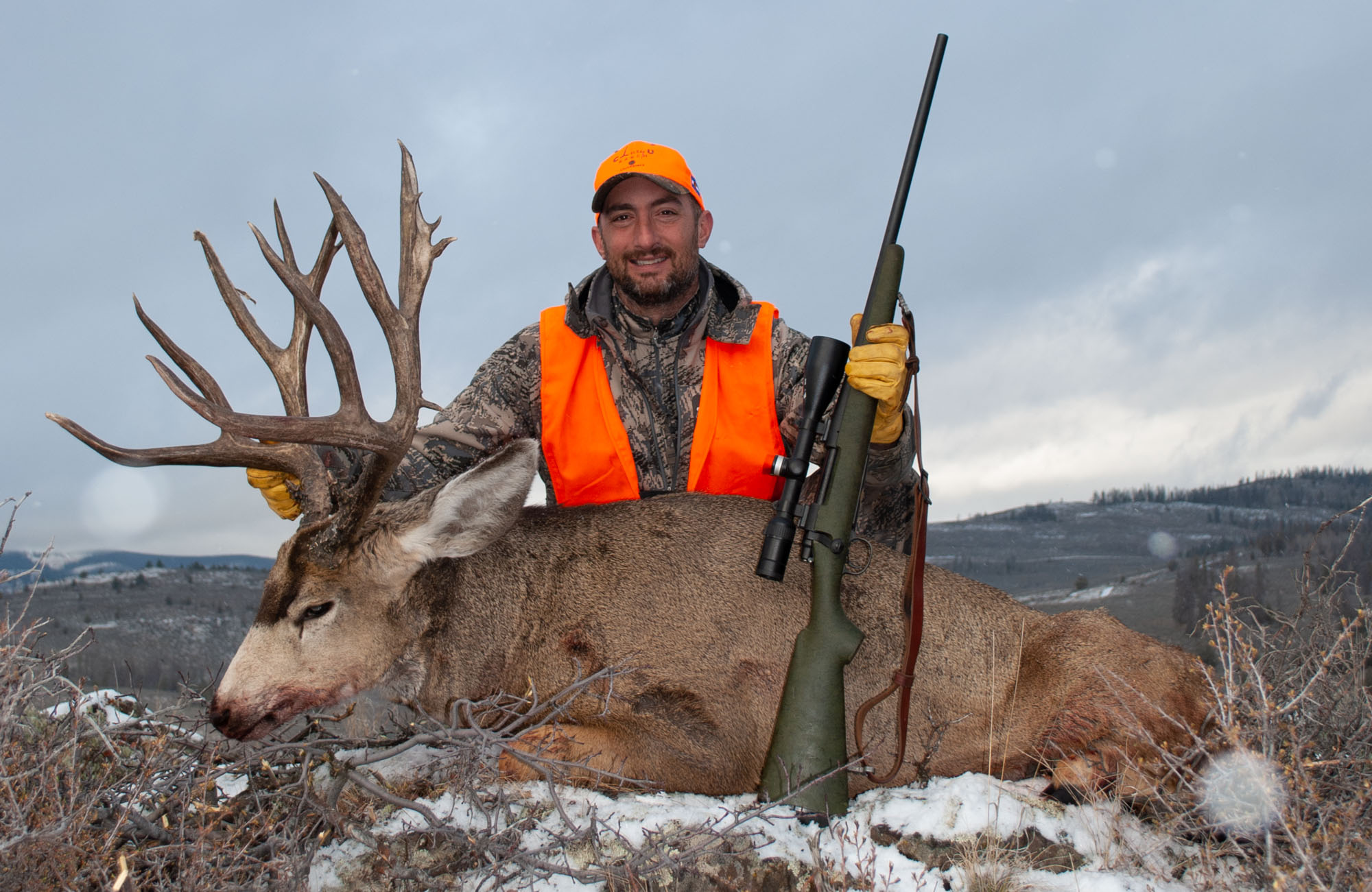
Best Mule Deer Caliber: 7mm/.284
It’s impossible to think about Western hunting and not put the 7mm/.284 at the head of the list of best mule deer calibers. We have the 7mm Remington Magnum to thank for that. Along with the .257 Weatherby, the 7mm Rem. Mag. probably fired the imagination of more aspiring mule deer, antelope, and elk hunters than any other cartridge. When people thought about flat-shooting cartridges, and long shots on heavy-horned mule deer, the 7mm Rem. Mag. was (and still is) what often jumped to mind.
But there’s a lot of romance and passion associated with other 7mm offerings as well. The .280 Remington is a scrappy underdog that’s hard not to root for. The 7 PRC is an interesting newcomer that hasn’t proven itself yet but is poised to do well. The 7mm-08 has its own tribe of devotees. The 28 Nosler is a favorite with many hunters. And there are outliers like the 7 SAUM, .280 AI, 7mm Weatherby Magnum, 7mm STW and others that all have enthusiastic followings.
7mm Remington Magnum
For the longest time, American shooters were allergic to metric rounds. The one exception was the 7mm Rem. Mag. which quickly caught on following its debut in 1962. In the decades since its arrival it has been one of the top 10 cartridges in North America and to this day is our most popular 7mm round.
It’s easy to see why this flat-shooting round is so dominant. Take the 160-grain Accubond at 3000 fps for instance. Sighted in at 200 yards, it drops 6.4 inches at 300 yards and 18.5 inches at 400 yards. For a hunting round with tolerable recoil that’s 60 years old, that’s pretty impressive.
Some elements of its design are now outdated. We’ll never see another belted magnum introduced, and its twist rate (1:9.5) isn’t well suited for some of the more advanced 7mm bullets. But no one can argue its suitability for Western game. As a do-it-all round hunting round it is among the best ever.
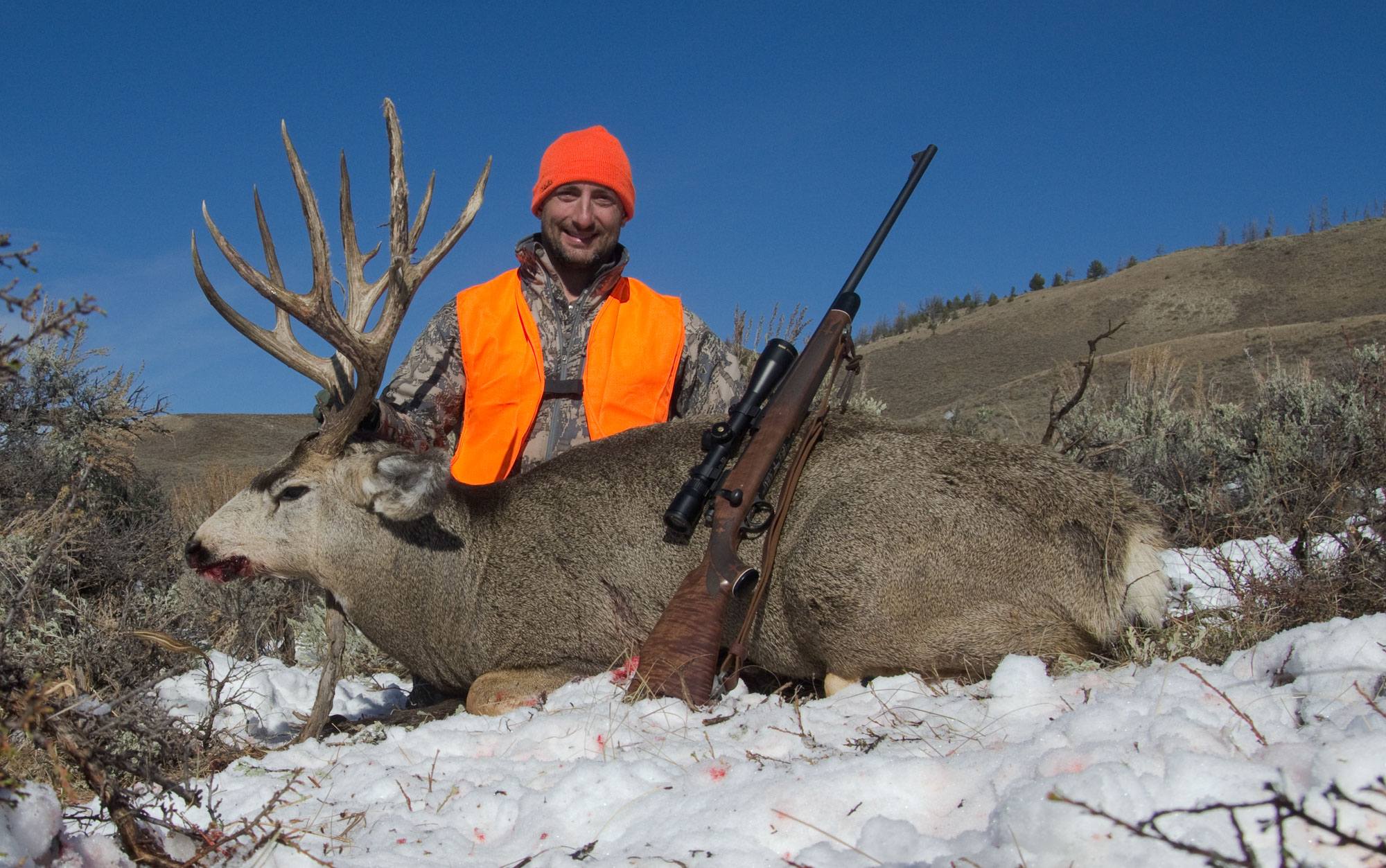
.280 Remington
I think the .280 Rem. is a perfect mule deer caliber. It’s no secret that mule deer are struggling due to unchecked predation, habitat degradation, climate change, and competition from elk and whitetails. The struggles that the .280 Rem. has gone through since it was introduced in 1957 are not dissimilar, and perhaps the .280’s resilience offers hope for mule deer as well.
The .280 had its work cut out for it when it was trotted out by Remington. It was trying to shoulder its way between the .30/06 (which is its parent case) and the .270 Win., which were the undisputed number one and two cartridges at the time.
On top of that, Remington bungled the introduction by changing the .280’s not once, but twice, first calling it the 7mm/06 and then the 7mm Express.
But thanks mainly to handloaders, who discovered that the .280 was forgiving, accurate, and easy to reload while getting excellent velocities, the round got another lease on life and has been chugging along ever since.
I took one of my best mule deer ever with a .280 running handloaded 140-grain Accubonds and that remains one of my go-to rounds for mulies and elk.
7mm/.284 Honorable Mentions
Listing all the runners-up in the 7mm category for the best mule deer caliber is like an Oscar acceptance speech that runs on too long. There are so many good 7mm rounds to acknowledge.
Plenty of shooters started with a 7mm-08 when they got their first rifle—in the early 2000s it was a popular chambering in “youth rifles”—and never saw any reason to change to something bigger, and it works well on mulies and other deer. The .280 AI has gained steam in recent years, and appeals to a certain set of ballistic sophisticates. The 7mm Weatherby is more popular with elk hunters, but those guys like to chase mule deer too, so it qualifies as a good option.
Of all the Nosler cartridges, the 28 Nosler has really taken off with hunters who favor long-range rounds, and certainly deserves a spot on this list.
I predict the 7mm PRC will have a bright future—it is essentially an updated 7mm Rem. Mag. that employs modern cartridge design and is optimized for some really great high BC bullets—and will be used by avid mule deer hunters in the years and decades to come.
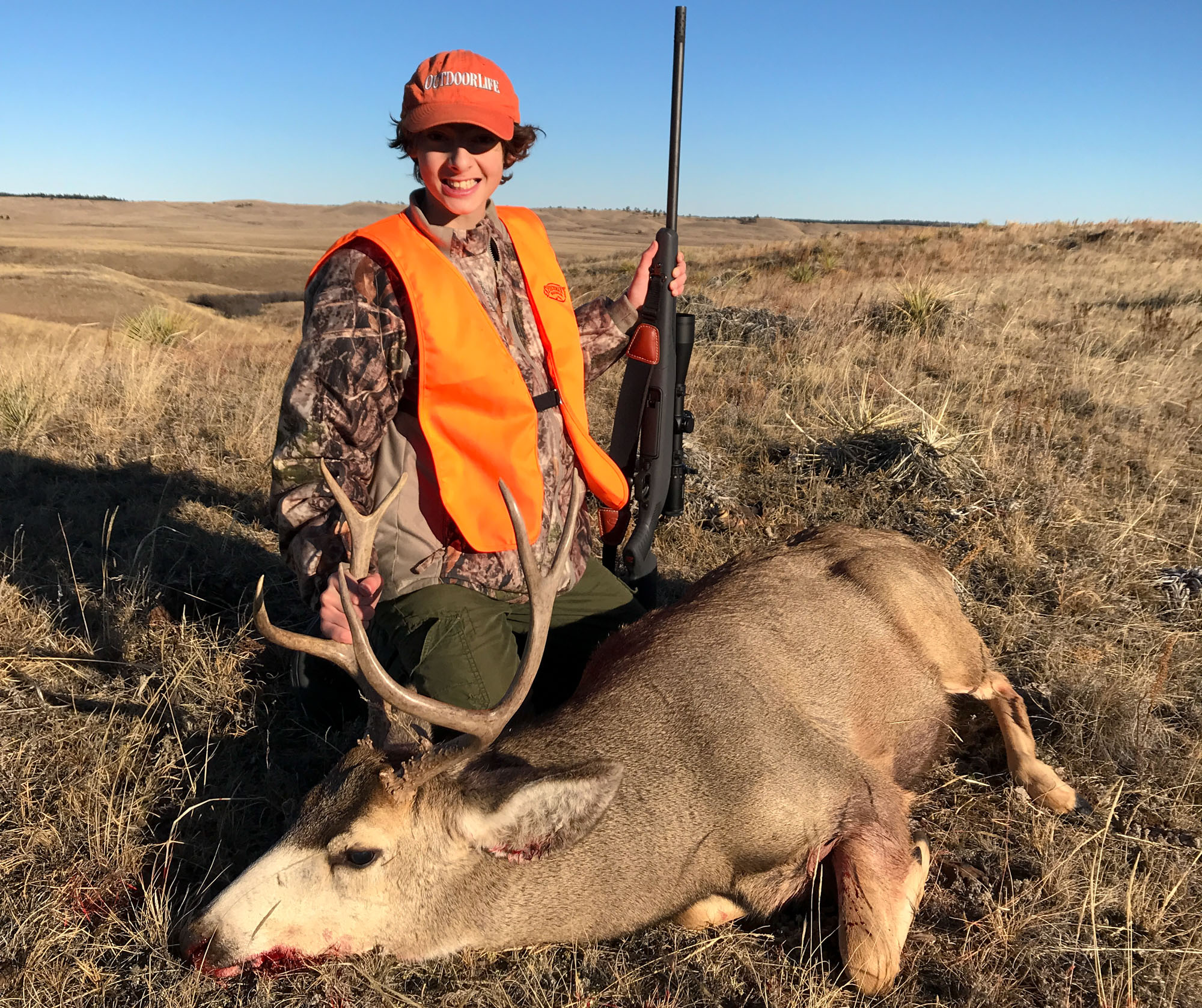
Best Mule Deer Caliber: The 30s
The .30 is America’s caliber. Whether we’re talking the .308 Win., the .30/06, or the .300 Win. Mag., there’s no denying the supremacy of .30-caliber rounds for North American shooters. And in the popularity of cartridges like the .30/30, .300 BLK, .300 WSM, .300 Wby. and long-range newcomers such as the .300 PRC and .300 Norma Mag. and the argument becomes irrefutable.
Pretty much any .30-caliber round you name will work for mule deer, though the .30/30 and the .300 BLK are marginal by today’s standards.
.308 Winchester
The .308 Win. is the Ford F-150 of big-game cartridges. It isn’t the hot new thing in the shooting world, but it is dependable and can handle damn near any job you throw its way. It’s do-everything versatility is why so many hunters use it for mule deer and other game. But you don’t need an expensive rifle to tap into the .308’s magic. If you’re looking for the best .308 hunting ammo, we did a major roundup of today’s offerings.
For mule deer, I’d steer you toward the Nosler Accubond in either 150- or 165-grain configurations and Federal’s 175-grain Terminal Ascent. All will work well should you need to take a longer poke.
.30/06 Springfield
Without question, the ought-six is the most iconic American big-game cartridge. Like so many other hunters, my first “real” rifle was chambered in .30/06, and I’ve used the round on everything from deer in North America, elk in Canada, moose in Alaska, and plains game in Africa.
I doubt any other cartridge has the same range of bullet styles and weights, so winnowing down the offerings to a couple “best” is a fool’s errand. Just about any good hunting bullet from 150 to 180 grains will work great for mule deer. That said, here are a couple of my favorites.
.300 Winchester Magnum
Not only has the .300 Win. Mag. stood the test of time, but it has managed to keep many other big .30s from knocking it off its perch as the king of American magnums. As a pure mule deer round, the .300 Win. Mag. is overkill—but as many have observed, it isn’t possible for an animal to be too dead.
Assuming the recoil and muzzle blast in a sporter-weight rifle doesn’t bother you, there is a king’s feast of bullets and loads to choose among. The Barnes 190-grain LRX is an absolute hammer. You won’t go wrong with any Nosler Accubond or Hornady’s 178-grain ELD-X. Federal’s 180-grain Non-Typical softpoint is another good option that’s a little easier on the wallet.
.30-caliber Honorable Mentions
One thing common to the .308, .30/06, and .300 Win. Mag. listed above is that while they are good mule deer rounds they are—let’s face it—a bit boring. Want to go with a .30 that stands out from the crowd? Find yourself an original .30-magnum, meaning the .300 H&H. It’s a cool round that’s fun to handload for and is a legendary big-game round.
Another classic is the .300 Savage. If you’ve ever wanted to hunt mule deer with an old lever-gun, it’s a great way to go. The .303 British, while not technically a .30-caliber, is another vintage round that’s accounted for a lot of mule deer and is off the beaten path.
Of course, there’s also the .300 WSM, which continues to be popular and will be used by Western hunters for years to come, even though the .300 PRC and .300 Norma Mag. are better-engineered cartridges.
